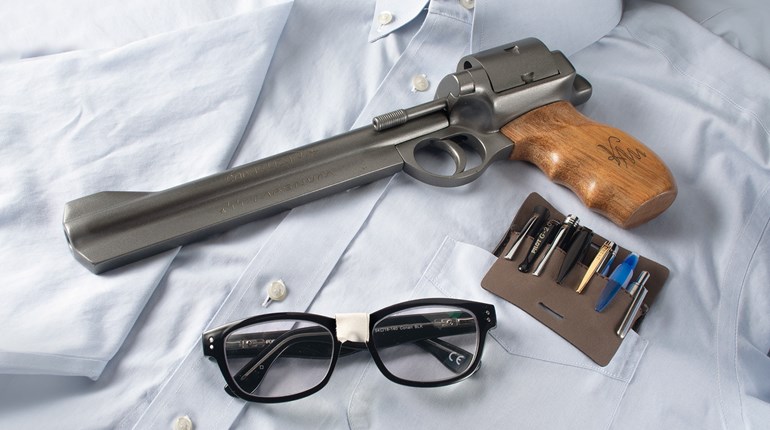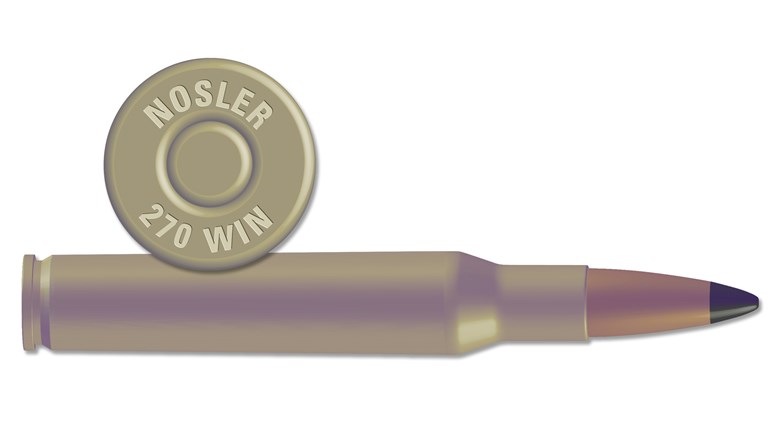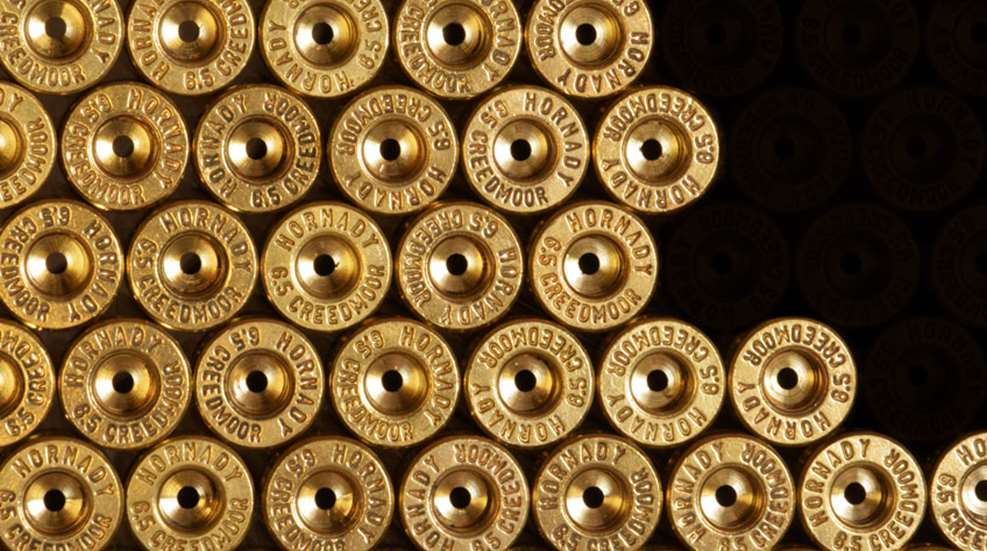
Even though the National Hurricane Center left it unnamed; a later conversation between Boston National Weather Service forecaster Robert Case and author Sebastian Junger labeled the famous 1991 weather catastrophe, “The Perfect Storm.” Junger wrote a book about the Gloucester fishermen who didn’t survive and it went on to inspire a blockbuster movie. As a result, the term “The Perfect Storm” was added to our modern vocabulary and has evolved to indicate a confluence of events resulting in outcomes not previously occurring.
It might be said that the shooting industry has witnessed such an event with the 6.5 Creedmoor rifle cartridge.
Like most historic storms, this one foundered and brooded for a while before it took hold and grew. Hornady first introduced the 6.5 Creedmoor back in 2007. It was designed as a target cartridge to be used at long range and with heavy-for-caliber bullets. The shooting world merely glanced its way and then went back to whatever shiny bauble was in vogue at the moment.
Then the storm’s legs started to form. For reasons that only a mystic could know for sure, the sport of long-range shooting grabbed the interest of gun society’s movers and shakers. Recreational, tactical or competition, the idea of hitting targets at ultra-long distances became the latest shooting cause du jour.
It took a while to sort out the best cartridges for this, but the 6.5 Creedmoor was soon discovered to provide a good balance of accuracy, low recoil and, most important of all, a very high “cool” factor that would attract the shooting equivalent of the popular kids. It was new, it was different, it had a cool name and it worked quite well.
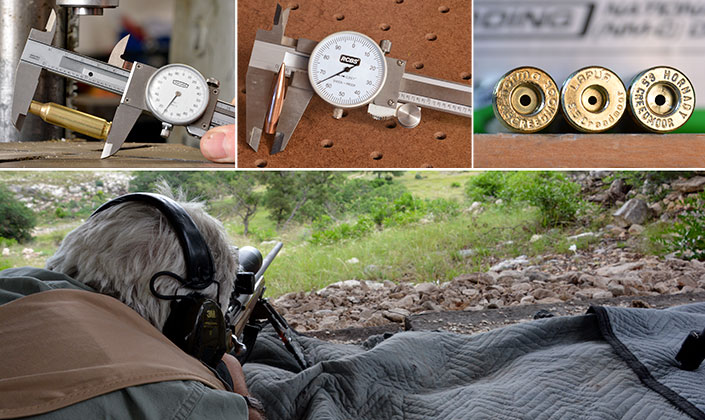
The final leg in the perfect storm was when Ruger smashed down the barriers to precision rifles with blue-collar pricing on its RPR line of rifles. That opened the floodgates to highly accurate precision rifles for the masses. With a position as the number-one choice in factory-produced long-range cartridges, the “Perfect Storm” that is the 6.5 Creedmoor formed and started making waves. The result was the most-successful, long-range target cartridge in history
If you disagree, consider Hodgdon’s H4350 propellant. In spite of what you may have read on the web, the millennial generation did not discover this powder. Hodgdon introduced it into its line-up in 1982, before most of them were born. It’s long been a staple of rifle-cartridge handloaders and a boringly consistent powder for generations. Then along comes the 6.5 Creedmoor. In the early days of production, Hornady, which makes reloading tools and components as well as ammo, published recommended hand-load data on the boxes of factory ammo using H4350 powder. Millions of shooters discovered that it worked so well, their search for the perfect handload started and ended right there.
In a normal handloading world, that would be a footnote in the cartridge introduction for future reloading manuals. In this perfect storm, it means there is a world-wide, multi-year shortage of H4350. Hodgdon is making and shipping more of the stuff than ever, but this huge popularity has caused the demand to far outstrip supply. It’s gone on for years and shows no signs of abatement. I have never seen anything like this and neither has Chris Hodgdon. He tells me that the company breaks records every month for the amount of H4350 shipped and still can’t meet demand, all because of the 6.5 Creedmoor. One cartridge, used almost exclusively for one purpose, is driving the H4350 market to unheard of heights. That is something the shooting world has never seen before.
When I first proposed this project, I was going to shoot most, if not all of the components available for the 6.5 Creedmoor in several rifles and report on my findings. Then that darn storm blew up to unforeseen proportions. With all the new introductions of components hitting the market hard and fast, that notion became an impossibility. I shot dozens of different loads in half a dozen different rifles, but I was not even keeping pace with the new options, let alone exploring all the old.
It’s easy to shoot out a barrel, or two, while seeking the optimum load. If you live for the hunt for a smaller group, this cartridge is going to make you very happy. If you are just trying to find a great load to shoot and maybe compete, here are a few suggestions to help with that search.
Propellants
The easy approach is to just use H4350 and be done—except for two things. One, it’s in short supply and hard to get. Two, this is a generalization and indeed there may be a better choice for your individual rifle waiting to be discovered.
The 6.5 Creedmoor is not a fussy cartridge, and by design or luck it works well with a wide range of propellants. Of course, the optimal propellants will vary with bullet weights and to cover them all would take a book, not a short article, so here are a few more suggestions that focus on bullet weights used for long-range-precision shooting.

I tried IMR4350. It shot very well, but then I knew it would. It’s another powder that has been around for a long time. Good choice, except it’s not a temperature-stabilized powder. However, if you are doing most of your long-range work in pleasant, or at least consistent weather, you should not rule it out.
Chris Hodgdon recommends using Enduron IMR4451. He told me, “It’s relatively the same burning speed as H4350. Enduron is temperature insensitive like H4350, plus it has copper-fouling-reducer technology.” The IMR Enduron line is manufactured in Canada and uses double-based powders. Because production of the temperature-stable Extreme line of Hodgdon powders made in Australia has not been able to keep up with the growing demand, Hodgdon developed the line of Enduron powders with the same temperature stability as the Extreme.
This temperature stability is extremely important to long range shooters. Even a small fluctuation in muzzle velocity due to temperature variations will be magnified downrange both in accuracy and in point-of-impact. With temperature stability we are assured better consistency through environmental changes.
The copper-erasing technology first seen in CFE223 helps keep metal fouling from forming in the bore and is a wonderful invention for any volume shooter.
I tried IMR4451, but I found it just a bit more difficult in my rifle to hit the sweet spot. Ron Reiber at Hodgdon told me this powder likes to be used at or near max pressure. I used that advice and now have a load that shoots very well and hits the data points I wanted for velocity and accuracy. What’s the best thing about IMR4451? It’s readily available.
I have had good luck with Reloader 17 powder with some very accurate loads. The newer RL16 shows a lot of promise. It’s temperature stable and has copper-removing additives. All of the loads I have tried so far are very promising, with excellent velocity and nice accuracy.
The folks at Vihtavouri recommend using N150 or N550. I ordered some, but it arrived too late to include in testing for this article. However, I have had outstanding luck with its powders in the past and would expect excellent results as they have similar burn rates to H4350. N150 is a bit faster and N550 is a little slower on the charts. Ramshot Hunter worked well in the 6.5 Creedmoor with 140-grain bullets. Winchester 760, AA4350 and Norma 204 are all also good options.
Remember the old rock lyric, “If you can’t be with the one you love, love the one you’re with?” Same with powder—use the one you can find, and you may just discover true love for your particular rifle.
Cases
I have been a handloader for half a century, and while the delivery systems have changed over the years, there have always been strong opinions about how one company or another makes cases that suck.
It’s all hooey. Sure, there are often some variations in production runs where a certain lot has problems, and that can happen to any company, which is how many of these stories get started. Somebody encounters some bad cases and they label that brand as problematic. Trust me, whatever the issue they encountered, it was a short-term problem.
There are no bad cases in today’s world. They simply would not survive in the market. Sure, there might be bad lots but, overall, any brand-name factory cartridge case is going to work fine.
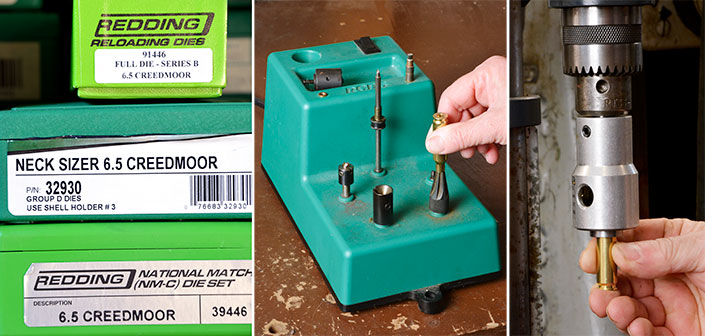
The price often reflects the features. Some cases, like Norma or Nosler, are expensive, but they do a lot of the prep work for you. In the end, they all work fine—if you use them correctly. Stick with recognized brand names, do the prep work and your handloads will be accurate. Just remember you should not mix and match cases. Also, if you are switching brands, not all case brands have the same internal capacity; you must match your load to the case. This is critically important when working at or near maximum-pressure levels, which is the natural habitat for the top-performing 6.5 Creedmoor handloads.
I have several thousand once-fired Hornady cases I picked out of the trash after a media event and shipped home. I spent a cold winter prepping this brass. I have loaded thousands of rounds with these cases as well as a lot more with new, unfired brass from Hornady, Nosler, Norma and a few other companies. Wanna know a secret? They all produced handloads that were astoundingly accurate.
Clean all fired cases. Full-length resize any case not fired in your rifle—even the new stuff—to iron out the neck dents. If they were fired in your rifle, you can neck size or partial size them for a bit more accuracy potential. Trim all the cases to a common length. Chamfer the case mouth, inside and outside. Ream the flash hole and remove any burrs. Then ream the primer pockets to a consistent depth. Weigh and sort the cases, tossing any that are off the average by more than 10 percent, or, if you are being fussy, five percent.

Primers
If you are looking for accuracy, then match-grade primers are a good bet. Standard primers may work as well, but they will never be better than match variants. Unless you are using a ball powder, there is no need for a magnum primer.
The 6.5 Creedmoor cartridge was designed with a large-rifle-primer designation, and I have had outstanding luck with Federal Large Rifle GM210M primers. Of course, it’s good policy to match the recipe you are loading from and use the primer that was used in the laboratory to develop the data.
Lapua offers cases with a small-rifle-primer pocket. This goes back to the days of Palma shooters using small-rifle primers in their .308 Win. loads. The claim is better accuracy. Are they right or is it a gimmick? I honestly don’t know, but there is a strong following with the small-rifle-primer concept in target shooting circles.
Bullets?
Talk about a huge can of worms. It seems like every time I look, there is a new bullet out for the 6.5 Creedmoor. I haven’t tried them all, but I have tried a bunch and I have yet to see a bad one.
Bullets for the caliber range from 85 to 150 grains. However, this cartridge was designed around the 140-grain bullet, and it performs at a high level with this weight. Some long-range shooters like to go heavier and some claim a lighter bullet is the key. The thing is, there is always a trade-off. Heavy bullets have a higher ballistic coefficient (BC), but will have lower muzzle velocity and may encounter stability issues depending on the rifling twist rate and other factors. Lighter bullets go faster, but with a lower BC they lose velocity more quickly in flight.
No target bullet from a 6.5 Creedmoor will have ultra-high velocity. The concept was for moderate velocity with a very high BC. Therefore, bullets from 130 grains to 145 grains seem to be the best option for long range work. Of course, if you want to experiment with other weights, please do. There are a lot of options out there.
I have tried bullets from Hornady, Nosler, Barnes, Sierra and Berger; all across the weight spectrum. They have all been very accurate and very consistent. I know it’s a cop-out, but I cannot tell you the best bullet for this cartridge. I suggest you find a high-BC target bullet that fits your needs for availability and price, work up a load for your rifle, tweaking seating depth and powder charge until you have peak accuracy. If that accuracy is within your goal—be realistic about that—then load a bunch of them and just shoot.
What is a realistic goal? We use the average of five, five-shot groups at 100 yards. If you have a .75-MOA average from a factory produced rifle, be happy. If you hit .5 MOA, stop and smile. You are done. It’s time to load and shoot. In my way of thinking, it’s more fun ringing steel at long range than wearing the barrel out trying to tweak another tenth of an inch off your group average.












